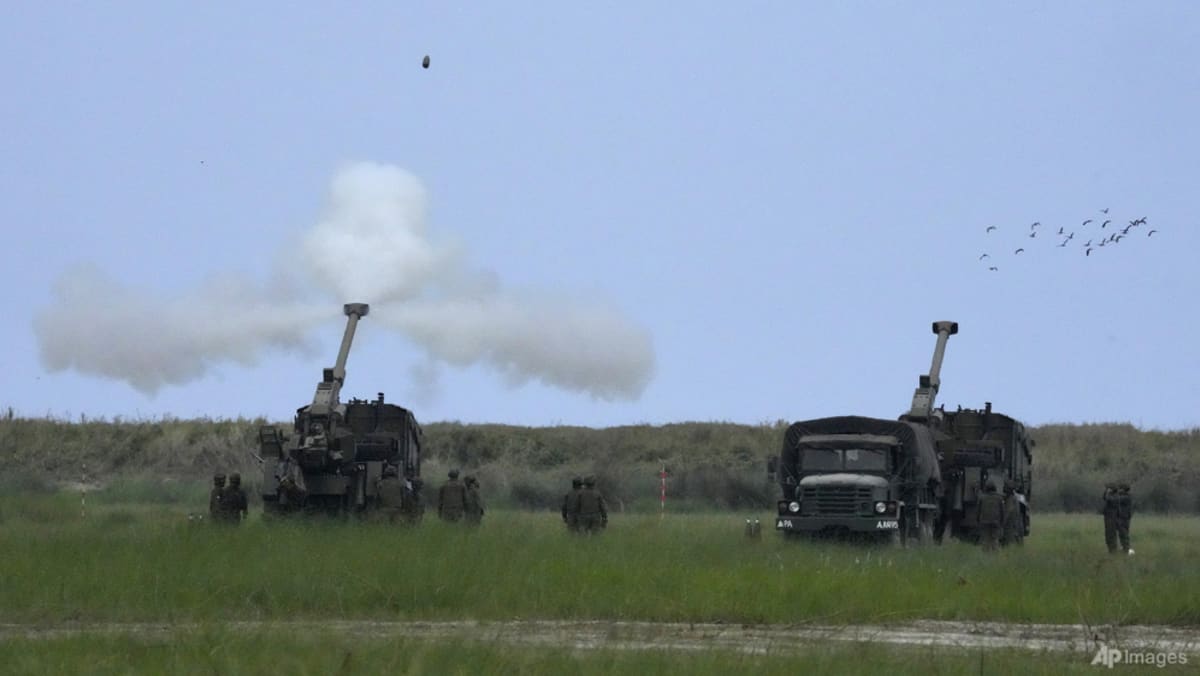Commentary: What’s the real message behind the warship sinking by US, Philippines in South China Sea drills?
MILITARY MIGHT
In 2016, Duterte scaled back on his original plan to impose a blanket moratorium on military exercises with the Americans, instead approving the continuation of Balikatan and the Enhanced Defense Cooperation Agreement (EDCA).
He mandated that joint military training exercises with the US had to focus on civic action and humanitarian assistance and disaster relief, as well as “less assault exercises”. Some key exercises were dropped in accordance with Duterte’s desire to do away with “showy war games”. Duterte also ordered the transfer of Philippine-US exercises customarily conducted in regions facing the South China Sea to be relocated to Mindanao in order to “not offend our neighbours”.
As a result, the annual exercise in 2017 was scaled down to just 5,400 troops from both sides, a sharp drop from about 11,000 the previous year, and the war game component was dropped. True to Duterte’s directives, there were no activities held in Palawan facing the South China Sea, and no live-firing in Zambales which is close to Scarborough Shoal, which Beijing maintained de facto control over.
The exercises in the following year saw a rebound in participation at 8,000 troops, including also amphibious landing drills in Zambales – at a time when China reportedly deployed missile systems to the Spratly Islands.
In 2019, more than 7,500 troops participated in exercises in Luzon, again facing the South China Sea, at a time when a Chinese boat swarm loitered off Philippine-held Thitu Island in the Spratlys.
Despite Duterte’s 2016 directives de-emphasising a “showy wargame” approach, the nature and scale of the 2019 exercises were anything but. It featured the US Navy’s amphibious assault ship Wasp which embarked the US Marine Corps F-35B joint strike fighters – the first time these jets were deployed for Balikatan.
Again, an amphibious assault landing exercise was conducted in Zambales and despite being couched under the official “counterterrorism” cover, those forces and manoeuvres involved made the drills appear closer to simulating a warfighting scenario instead. An airfield assault drill was also arranged at the Philippine military’s request – which is interesting given Manila’s sole airfield in the Spratlys is located on Thitu Island.
Balikatan was not held in 2020 due to COVID-19, whereas the 2021 iteration was a heavily down-scaled one with fewer than 700 troops participating not due to geopolitical considerations – given the Philippine-Chinese flareup over Whitsun Reef in the South China Sea early that year – but pandemic restrictions.
In 2022, however, the exercise rebounded in scale, involving 8,900 troops. The US deployed for the first time an amphibious insertion of a Patriot anti-missile system, while the Philippines showcased its newly acquired weapon systems and platforms.
For all the latest world News Click Here

